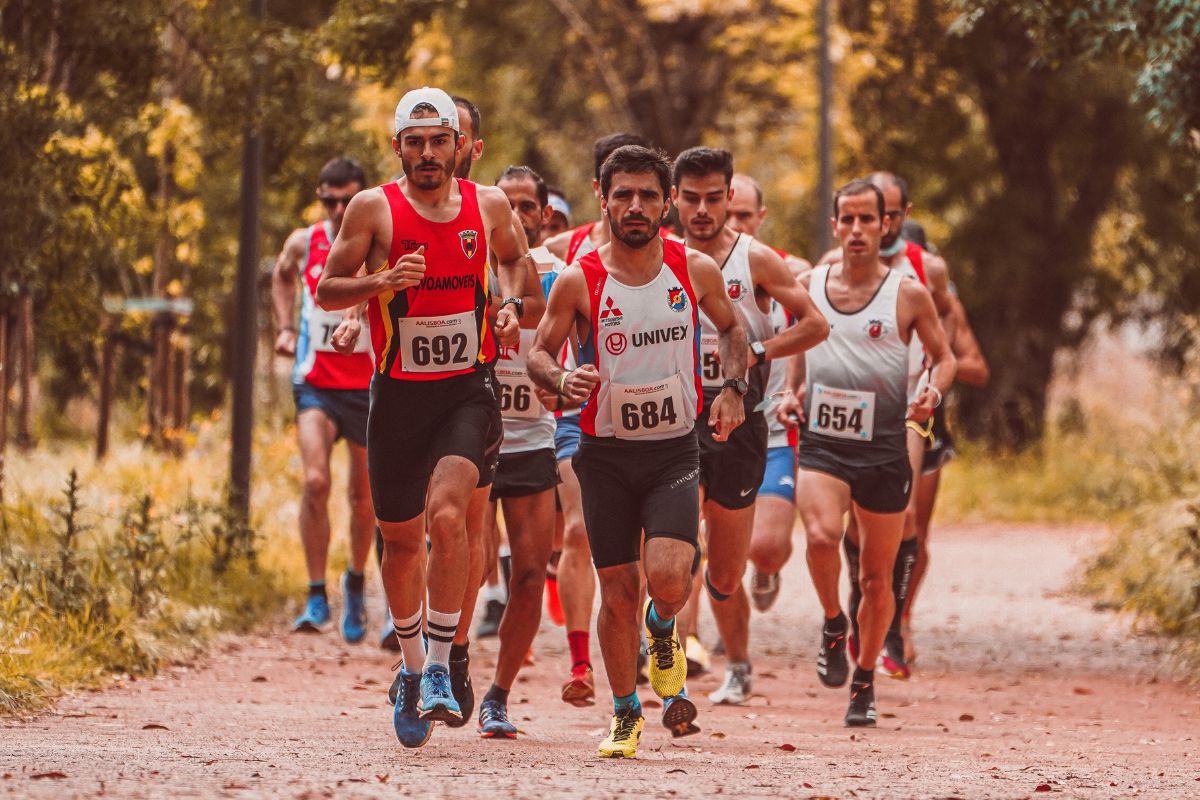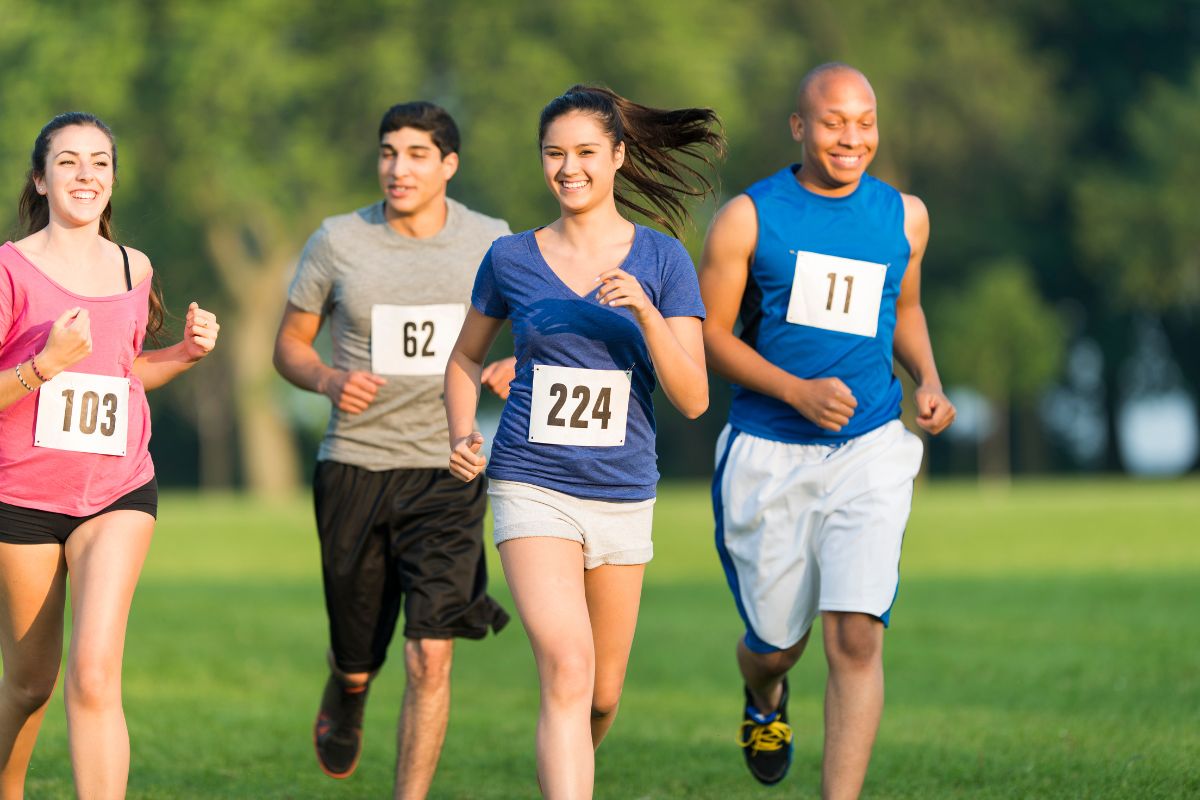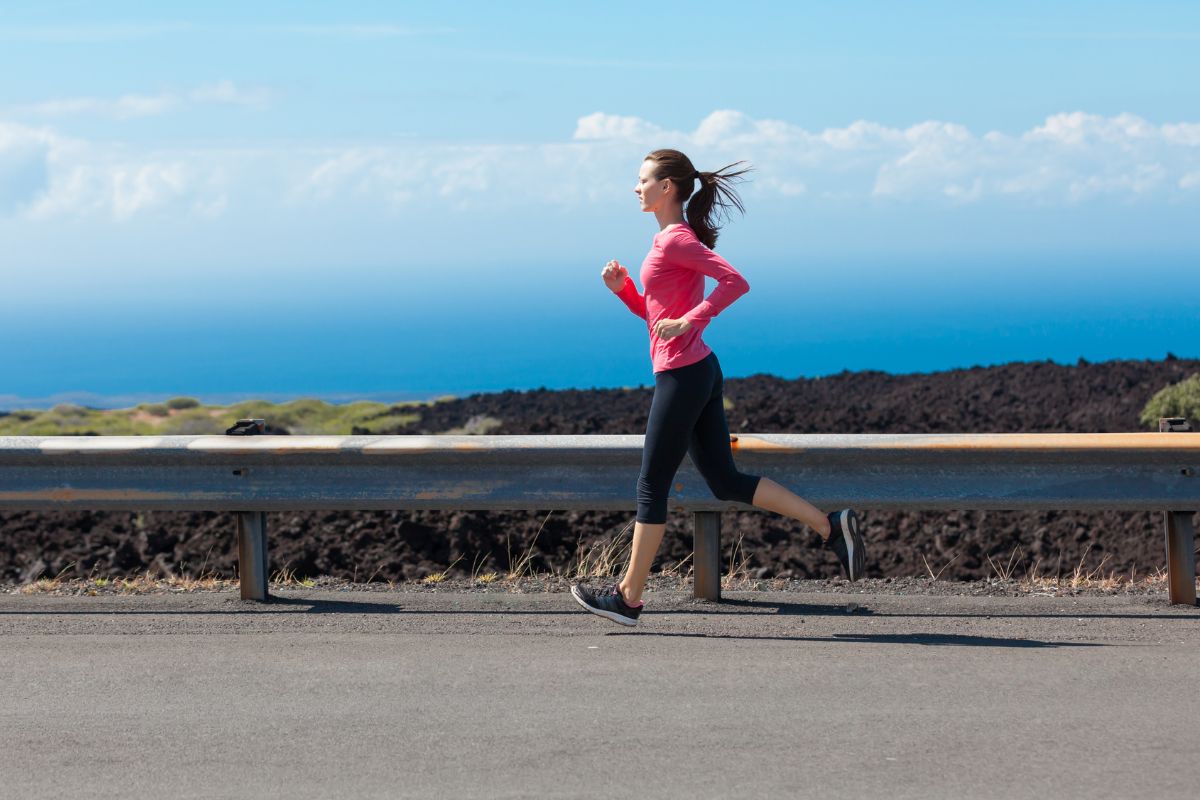If you’re a jogger, or someone who likes to go on long walks, you know how troubling calf pain can be. The inability to do something you love is enough to get anyone down.
When it comes to running and running-related calf pain, it can feel like an impossible fight.
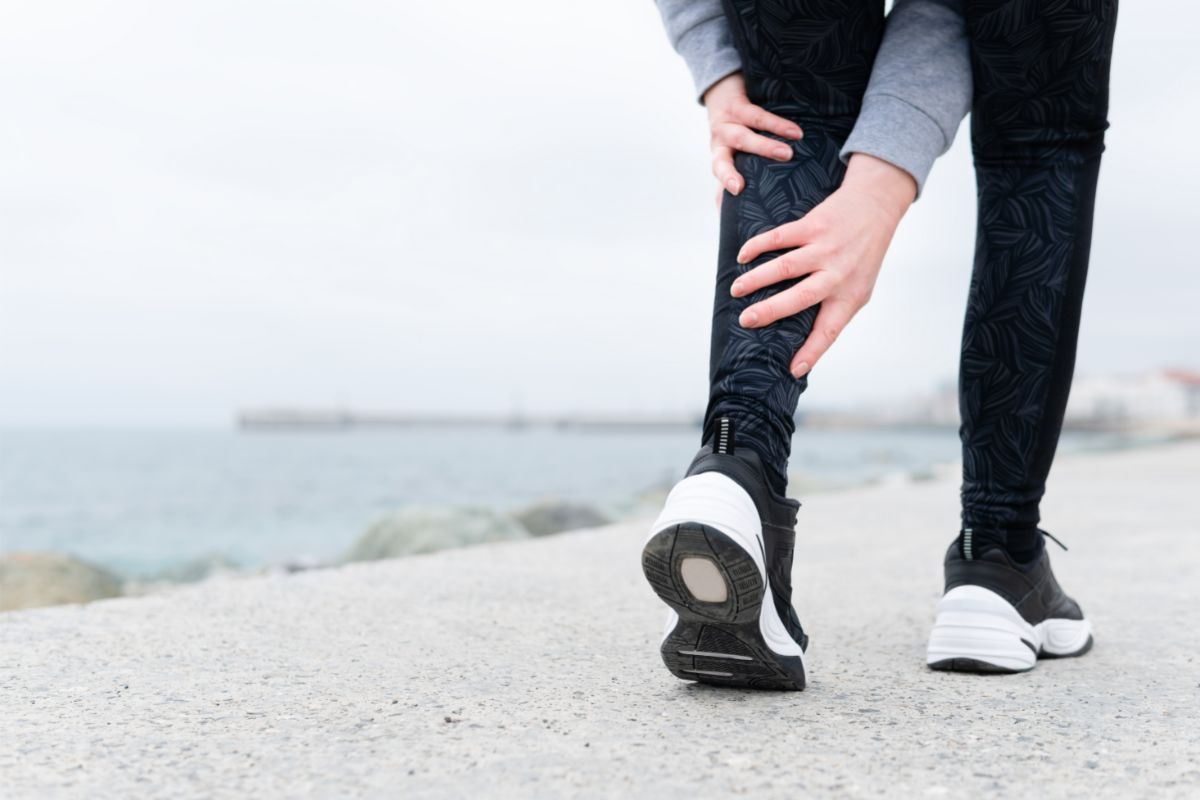
There might be times when even periods of prolonged rest don’t help, and you injure yourself in the first five minutes you’re back.
Runners experience this issue more often than they care to admit. In some cases, the pain can easily be treated with a little rest and relaxation. However, sometimes this calf pain can be recurring.
In order to find a suitable treatment option, it’s important to understand your calf and ankles. There will always be a relationship to examine, and in order to be successful, we need to understand our bodies.
So, if you are someone who has struggled with calf pain you think might be related to running, stick around. We’ll be going through everything you need to know to take strides in the right direction. Let’s begin.
Understanding Your Ankles And Calves
Before we can go any further, it is crucial that we have an understanding of our bodies. In this case, we need to take a look at the calf and ankle.
While the majority of people tend to associate the soleus and gastrocnemius muscles with the calf, there’s a lot more to it. Of course, these two muscles are the largest, and the most visible, but there is more than meets the eye.
These two muscles are connected to the Achilles tendon. In turn, this tendon is attached to the muscles that are located at the back of the heel.
There are a number of other structures in the calf. For example, under the outer structures like the two muscles mentioned above, there are also deeper systems – like the toe flexors and posterior tibialis.
Not only that, but there are also the peroneal muscles, which form the calf muscle’s lateral portions.
Overall, there are six primary areas to take into consideration when we’re talking about the calf and the related muscles.
These are as follows:
- Peroneus longus
- Gastrocnemius
- Tibialis anterior
- Soleus
- Exterior digitorum longus
- Achilles tendon
Too often, athletes and runners don’t pay enough attention to the smaller structures within the calf. However, in order to understand calf pain and know where it comes from, it’s crucial for us to understand the calf as a whole.
That includes both the large and small structures located in the area. Since there are so many tissues involved in the movement of the calf, it’s impossible to determine the cause of pain without taking them into consideration.
It isn’t as simple as relieving general calf pain. Larger muscles might be perfectly fine in some cases, and the pain is due to the smaller muscle groups.
Overall, the more muscles there are in an area, the more susceptible that area is to injury and pain. This in turn plays a major role in the pathology of injuries.
Since the calves are attached to the ankle as well as the knee, this is very true. In order for our calves to function properly, both the knees and ankles must be in good working order, too.
The kinetic chain of the legs are affected greatly by those parts of the body. This is especially the case for efficient shock absorption upon impact and push-off.
Since the tendons and muscles in our calves are some of the first structures that go through rigorous movement and impact, injuries are common.
The impact of running a lot means that runners frequently experience a lot of running-related injuries. Anyone who chooses to do a lot of running must be biomechanically and physiologically prepared to deal with the impact that their training will have.
If they aren’t, they will be very susceptible to injury.
Various Types Of Calf Pain
There are a number of types of calf pain you could be experiencing. From sharp to dull, or even chronic pain, calf pain can vary greatly. These issues are commonplace, and can affect even the most experienced runners.
While it’s easy enough to know that you are in pain, understanding why is the most frustrating part of it all.
Of course, there could be a number of causes. However, it’s important to understand the type of pain you are experiencing. Until you can determine that, finding a solution is likely to prove extremely difficult.
Chronic Calf Pain
There is usually a pretty consistent pattern when it comes to chronic calf pain. Runners will start to experience pain similar to that of a crap when they reach a certain training time or distance.
For example, at the five-mile mark, this pain might set in over and over again. If you choose to continue running past this mark, the pain gradually gets worse.
This pain might not be severe enough to stop training, but it’s noticeable and very uncomfortable. However, chronic pain is likely to be enough to mean that you change a few habits and perhaps don’t try as hard.
While chronic pain is often very predictable, it typically comes about from overuse of those muscles. This might happen when people go beyond their usual mileage suddenly, without working up to it.
It’s a sign of your system being overloaded repeatedly without being able to get enough rest. So, this type of pain is essentially a repetitive strain injury (RSI).
While chronic pain isn’t severe, it can have a negative impact on your emotional and physical wellbeing.
As far as injuries go, these can be very frustrating to deal with, as it’s minor enough to continue training, but bad enough to inhibit your regime.
Aching, Dull, Calf Pain
Aching calves is a very common issue among runners. This is often experienced when the warm-up starts, and might ease as the running starts before getting worse.
An aching and dull pain is unlikely to be enough to stop runners from stopping their exercise, but they often feel the pain afterwards. This pain is likely to result in more rest days being implemented, or longer resting periods added to routines.
When you experience this kind of pain, your body is telling you that it needs more rest. The repetitive microtears in your calf tissues require more recuperation time in order to function well again.
This kind of pain is referred to as “tissue strain”. A great example of this would be Achilles tendinopathy, a condition we think is brought on by increasing the overloading and tightness, stiffness, or insufficient tissue functionality.

Sharp Calf Pain
This final type of calf pain is the most alarming – sudden sharp pain. Those who have experienced this will know exactly how painful and unpleasant it can be.
This kind of pain is likely to start when you are running, rather than warming up. When they experience this sharp pain, it’s usually enough to stop them from running.
A sharp and intense calf pain is a clear sign that something is wrong. In many cases, it relates to a very serious level of muscle strain that your body is trying to deal with.
There are a number of levels of strain severity, and some can even be seen. You might see discoloration, swelling, bruising, and the area might even feel hot to the touch.
Thankfully, this kind of calf strain is less common than the other two previously mentioned. However, it still happens relatively frequently, and can be alarming.
Many people have reported that this sudden calf pain happens when they have a sudden increase in speedwork.
This tells us that both the tendons and muscles in that area of the body were not properly prepared to take on this challenge.
When loading forces are increased in high intensity workouts, these kinds of injuries are more likely to happen.
Calf Pain – The Biomechanical Risk Factors
Despite increased volume load during workouts playing a role in calf injuries, this isn’t the only cause. In fact, biomechanical deficiencies might play an even bigger role in the issue than you might think.
What do we mean by biomechanical? In relation to exercise, the term “biomechanical” refers to the science of movement relating to a living body.
This includes how the bones, muscles, ligaments, and tendons work together in order to produce or cause movement.
This is part of a much larger field of science known as “kinesiology”, which focuses on the mechanics of movement.
So, now that we understand what that means, how does this relate to calf pain? Well, when we’re talking about biomechanics and calf pain, form is the most important thing.
As such, when we use improper form to complete exercises, no matter what they are, they can have a detrimental effect.
When this bad form is combined with repetitive exercise, such as running, and you throw in a higher workload, the risk of injury grows significantly.
Eccentric contraction is when calf strains usually occur. This refers to when the tendons and muscles are elongated under your weight, and is any part of your gait. In other words, from the point of initial contact to the peak knee flex.
This is the primary phase where the leg needs to absorb the impact created.
While this phase is relatively minor in the scheme of running, there are a number of biomechanical issues that can lead to calf strain.
Knee-Dominant Running
Knee-dominant running is a common biomechanical issue that runners experience.
This refers to the point of knee flexion (PKF), which is when your stance leg is planted completely on the ground. When examining this issue, we focus on where and how the lower leg is positioned.
If the shin is angled forward to push your knees past your toes, it means you run with a knee dominant form.
This results in your calf muscles needing to work much harder due to the steep angle. Supporting the shin becomes harder as a result, as it is subjected to too much loading.
Not only that, but when your knee juts out too far, it ends up bearing the majority of the impact when the foot lands. This excessive loading then gets displaced onto the joints instead of the correct muscle groups.
As a result, your joints are forced to bend more than they should in order to attempt to compensate for the lacking absorption of the shock.
This will lead to increased dorsiflexion at the ankle. This dorsiflexion will only exacerbate the strain further, which will cause more strain and loading within the tendons and muscles in the calf.
The most common culprit for increasing pain or aggravating the situation is the degree your shin is at while running. However, the rate of loading can also make things worse, and the faster it is, the worse it is.
Since overloading is the main factor to consider, when it happens quickly in a short period of time, tears and pulls are much more likely to occur. If this is left alone, it can lead to chronic pain and problems in the future.
Improper Foot Landing And Biomechanics
There are more factors to consider, however. Overpronation is another incredibly common biomechanical issue that runners face.
This relates to when the feet get rolled too far inwards, and can result in the arch of the foot flattening too much as you go through the stances in the gait.
When this pronation issue is left alone, it can result in the lower leg angling out laterally. This might not be visible to the naked eye, but can have a negative impact on running and activity.
As impact repeats over time, your foot landing will be strained, which results in strain being put on the outer peroneal muscles as time goes on.
Similarly, you can get a similar effect with crossover. This refers to the feet landing past your body’s midline, and your legs get positioned at a lateral angle as they come into contact with the ground.
When this happens, the body is required to absorb more of the shock, and it gets improperly distributed to your calves’ passive structures (the shin bones and tendons).
If you run with either one of these issues, your body has to repeatedly deal with the excessive forces. This is done with the wrong anatomical systems, which might suggest that there is not enough neuromuscular control and activation.
Adduction Or Internal Rotation At The Hip
These issues are often related with overpronation deviations. When we’re talking about hip adduction, think of things like jumping jacks.
Those, and similar activities, creates motion which allows you to move your leg towards your body’s midline. In terms of hip internal rotation, however, happens when your thigh is rotating inwards.
While both of these mechanics do have a place in some aspects of training (e.g. flexibility and mobility”, they can negatively impact a correct running gait.
The motion that happens from the hip joint will cause the femur and thigh to rotate inwards, which results in a “collapse” at the knee joints. This increases the loading of the knees, but also has an impact on the rest of the kinetic chain.
These mechanics compensate for the poor form while running, and results in a lateral bend, or “bowing” of the whole leg. While this might not seem like a big issue, it puts extra loading on the Achilles tendon, as well as various other calf muscles.
This happens in an attempt to absorb the extra forces, which they are not built for.
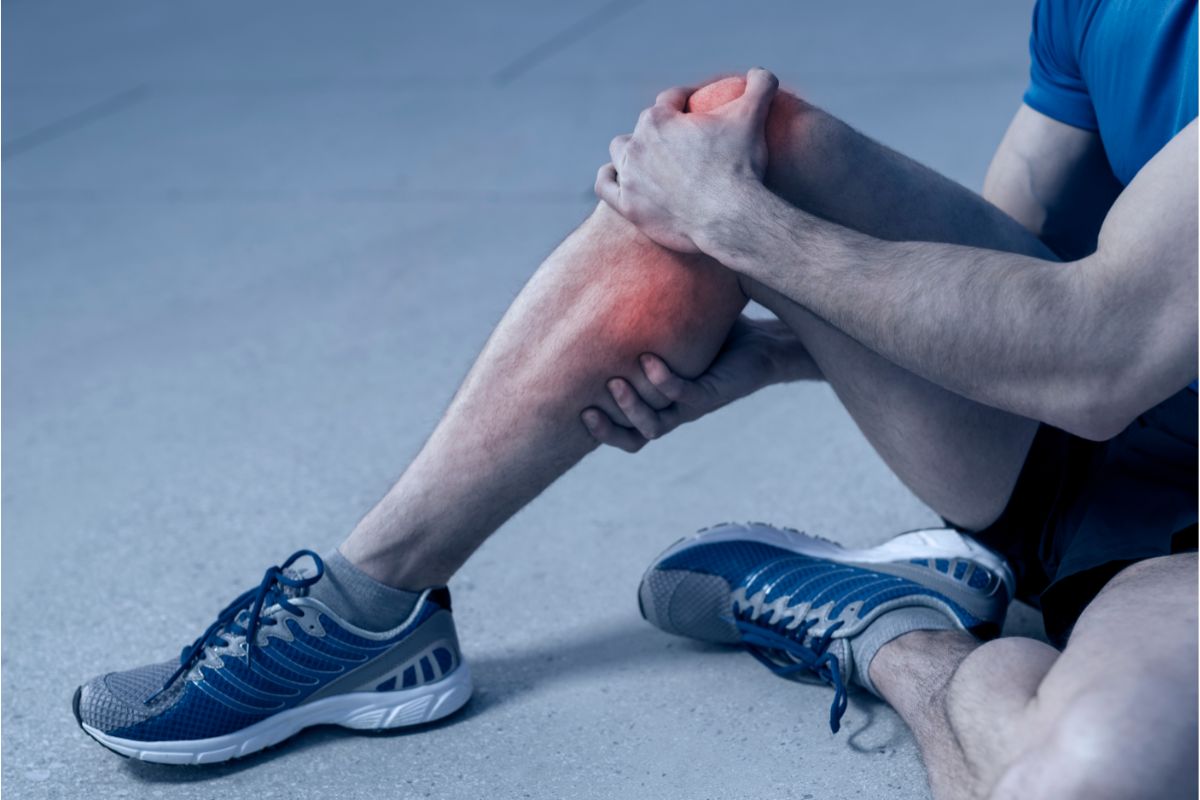
A General Guide To Treating Calf Pain
When you have biomechanical deviations, they can almost always be used to indicate the cause of your calf pain.
The truth is, in order to overcome the calf pain, the root cause needs to be seen to and fixed. In many cases, that is the biomechanical deviations!
It isn’t always that easy, though. These deviations need to be targeted and altered outside of the running you want to do. The best running form doesn’t allow you to be untouchable when it comes to calf pain.
If you have insufficient practice with plyometric exercise or impaired calf strength, you can still experience the symptoms of calf pain.
Because of this, the road to recovering from calf pain can vary greatly. You may need to do strengthening exercises or even balance drills.
Even then, there’s no set time for how long it could take, as this will depend on the severity of the injury as well as the root cause.
With that being said, it’s important to cover what the factors could impact the timing and healing process. As such, we’ll take a look at those in the sections below.
Treating Calf Pain – How Long Does It Take?
Level Of Tissue Damage Present
The level of tissue damage is the primary factor that needs to be considered when thinking of treatment and recovery. For this, grades are used to determine severity.
These grades refer to the suddenness and depth of the stretch the calf went through, and the symptoms that come with it.
There are three grade strains that are used. The most severe of these (grade three) indicates a full rupture or tear of the tissue in the calf.
When these kinds of strains occur, calf function will immediately be limited, and the person will experience excruciating pain because of it.
For these strains, surgery is a very possible outcome, and recovery will likely include long-term rehab and work.
For grade two strains, there is moderate damage to the tissue in the calf. In terms of pain, it will be moderate rather than severe. This means that you might be able to continue your activities, but definitely should not.
In this case, you are more likely to experience a sharp pain, accompanied by swelling and bruising,
A grade one strain is pretty mild. While you are likely to experience some sensitivity and pain, they are bearable. Tightness of the calf is common, and the symptoms might only appear a day or so after the activity has been completed.
In terms of healing times, grade one and two strains can differ greatly. The shortest time these low level strains may need to heal is around 2 weeks, but this can extend for up to 4 months.
This timing will depend on how much damage was done and how quickly proper care was sought out.
The kind of rehab you need will also impact healing times. We will go through these below.
Treatment Options For Calf Pain
Plans will be different for varying severity, causes and which tissues have been damaged. Overall, mild pain will result in range of motion, strength, and form tests.
This will be done to determine what caused the injury, and how to move forward. If you are still able to run, a running record may be taken, or a biomechanical analysis will be done to see if there are inefficiencies or errors that might make your injury worse.
After the injury’s cause has been determined and the practitioner knows your pain level and inhibition, a treatment plan can be written up.
No matter the severity, it will be built on the five training staples:
- Muscle Strength – building a connection between the muscles and the brain in order to allow muscle fiber recruitment for movement patterns.
- Muscle Activation – when all the muscles are “awake”, this is required. Neglected muscles will be targeted to aid in loading.
- Movement Control – you will learn to better control your body’s movement and learn the proper form and biomechanics for exercise.
- Stability Training – this will focus on the reflexes and directions in the lower extremity. Since many micro-adjustments are needed for running, your muscles must learn to respond to unexpected things.
- Running Retraining – the root issue is worked on. This can be the running form or any other issues you are experiencing. This will involve optimizing the running form and improve power generation, shock absorption, and a number of other things.
Please note that these are just brief overviews of the five key staples for treatment plans. There is no one size fits all, and all treatment has to be carefully tailored to particular injuries and characteristics.
To Summarize
Calf pain can either be chronic, dull, or sharp. The causes can vary greatly, though they are likely to primarily be due to incorrect biomechanics. In order to prevent calf injury, or any injury, it is crucial to have the proper form when carrying out exercises.
Without this proper form, you are putting yourself at risk of injuries.
Healing times can be from as little as two weeks for minor strains, to several months or even a year. So, if you’re a runner, always be sure to listen to your body.
If you feel like something is wrong, take steps to find out what the issue is and make the appropriate changes your body needs.
- Can Dogs Run Faster Than Humans? (Running With Your Furry Friend) - October 4, 2022
- 10 Doggie Fun Runs You Will Love [Ultimate Guide] - October 4, 2022
- What Are Division Results In Running? - October 4, 2022


